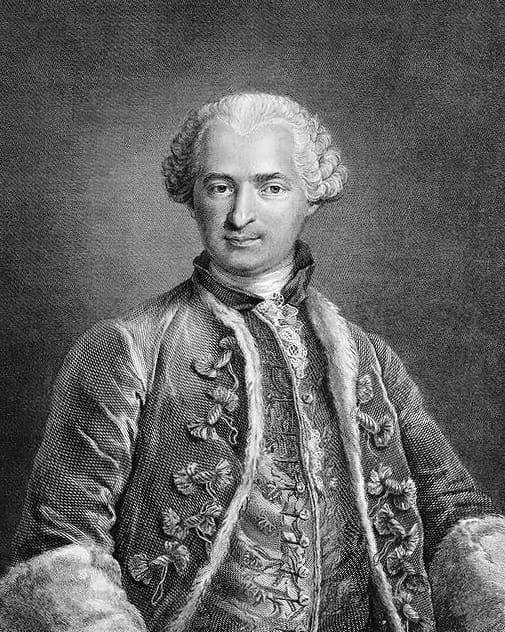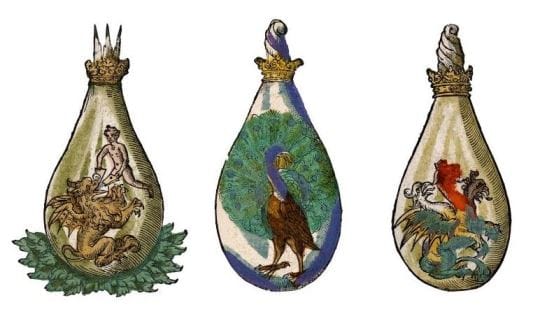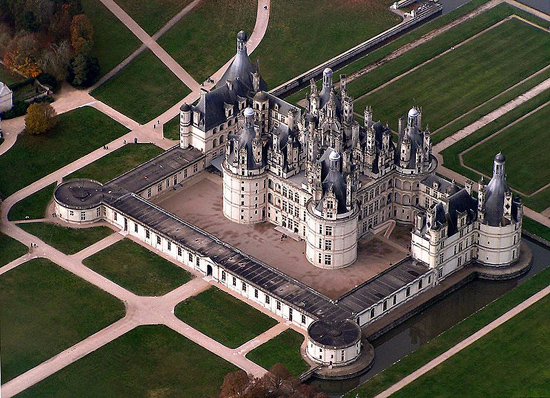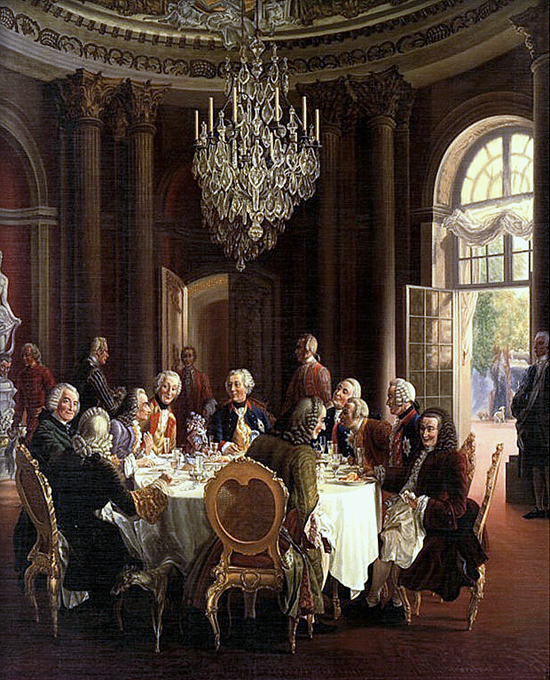The Count of Saint Germain

The Count of Saint Germain was in London in 1760 and it was there he lost the Elixir of Life to the courtesan la Charpillon, or so the theory goes.
Casanova encountered the Count later that year in Switzerland and learned what had happened. Casanova determined to prise it from Charpillon, hence the events of this chapter. But what of the Count himself? How did he get the Elixir in the first place and why did he fail to retrieve it?

The engraving up top, from 1783, is said to be the Count. It is a replica of a portrait (now lost) that was owned by Madame d’Urfé. She was an eccentric and rich widow in Paris who is one of the major characters in Casanova's memoirs. Madame, over the years, enlisted the Count, Cagliostro and Casanova in occult practices that she hoped could produce an Elixir that would turn her into a man so that she could converse with the spirits. So, this engraving may be the Count. We don't know but Wikipedia is willing to say it might be him. In the absence of anything better, this will have to do.
There is surprisingly little known for sure about the Count of Saint Germain. One source states:
The Count was wealthy, with no visible means of support. He concealed his real name and origin. He was celibate, ascetic, travelled constantly, and dropped out of sight for years at a time. He was called a charlatan, but his reputation was spotless. On the face of it, he seems to have been a wealthy eccentric with a taste for mystification, music… and fabric dyes.
That covers most of it except that he may have been Italian or Spanish by birth (not Transylvanian) and he may have been involved in diplomatic missions for Louis XV, or even a spy, no easy thing for an outsider. Presumably it was during his travels that he encountered the Elixir and began using it. Louis and Pompadour were impressed of course - in 1758 they gave him rooms in the empty Château de Chambord in the Loire Valley (below) to try and reproduce the Elixir in great secrecy. But, as we know, the Count failed in this endeavor and he lost the vial in 1760 in London.

The Count did not get another chance to recover it. He was called away by Louis to assist in the events in St. Petersburg that led to the murder of the Czar and the coronation of Catherine (the Great). Distracted by his diplomatic missions, the Count began the slow dissolve into Nothing and likely died in 1784 in northern Germany.
Casanova describes meeting the Count during these years and deciding he was indeed a charlatan but a very gifted one who could talk everyone else under the table. That was no mean feat when Casanova was one of the other guests. At the dinner the Count ate nothing and Casanova copied him. He writes: "Notwithstanding his boastings, his bare-faced lies, and his manifold eccentricities, I cannot say I thought him offensive. In spite of my knowledge of what he was and in spite of my own feelings, I thought him an astonishing man as he was always astonishing me."
Presumably it was at a table like this one below which shows Frederick the Great (center) at Sanssouci hosting Casanova possibly (on the far left), and surely Voltaire (leaning in from the left) and other celebrities. This painting, Tafelrunde, by Adolph von Menzel actually dates from 1850, so it's no more reliable than the engraving at top.

By the way, one clever theory I've read is that the elixir of life offered by Saint Germain was actually a powerful laxative - a tea of elder flowers, fennel, and senna pods, soaked in spirits of wine. Given the chronic problem of constipation, this makes a certain sense.
